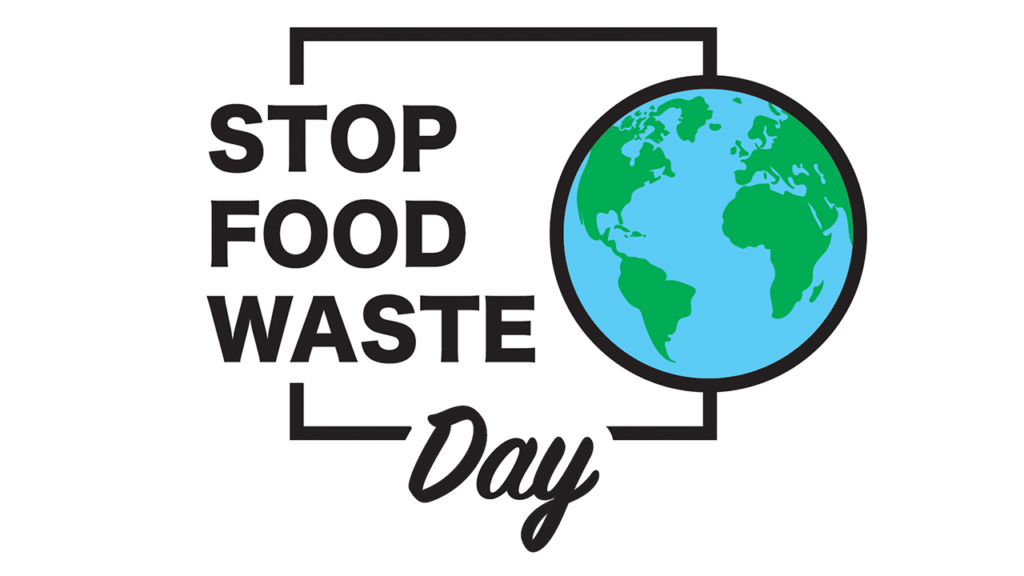An unimaginable amount of food is wasted every year. According to the staff at Recycle Track Systems (RTS), “The world wastes about 2.5 billion tons of food every year.”[1] Would it surprise you to learn that America is the world’s worst offender? The RTS staff reports, “The United States discards more food than any other country in the world: nearly 60 million tons — 120 billion pounds — every year. That’s estimated to be almost 40 percent of the entire US food supply, and equates to 325 pounds of waste per person. That’s like every person in America throwing 975 average sized apples right into the garbage — or rather right into landfills, as most discarded food ends up there. In fact, food is the single largest component taking up space inside US landfills, making up 22 percent of municipal solid waste (MSW). All told, the amount of food wasted in America has an approximate value of nearly $218 billion — the equivalent of 130 billion meals.” Completely eliminating food waste is impossible; nevertheless, Stop Food Waste Day draws attention to this serious problem. The Stop Food Waste website notes, “Started in 2017 by Compass Group USA, Stop Food Waste Day is now recognized globally in every corner of the world as we unite to educate, inspire, and ignite change.”
What Can Be Done?
The U.S. Department of Agriculture (USDA) reports, “In 2015, the USDA joined with the U.S. Environmental Protection Agency to set a goal to cut our nation’s food waste by 50 percent by the year 2030.”[2] Here’s the rub: “The United States currently does not have a single baseline estimate of food loss and waste.” In order to measure progress, the USDA indicates it is using “two very different measures [to] describe the amount of food loss and waste in the United States.” Those measures are:
• EPA estimates: 2010 was selected as a baseline at 218.9 pounds of food waste per person sent for disposal. The 2030 FLW reduction goal aims to reduce food waste going to landfills by 50 percent to 109.4 pounds per person.
• USDA estimates: amount of food loss and waste from the food supply at the retail and consumer levels: in 2010 food loss and waste at the retail and consumer levels was 31 percent of the food supply, equaling 133 billion pounds and almost $162 billion.
The USDA notes, “Neither estimate provides a comprehensive evaluation of food loss and waste in the United States. However, reductions in both these estimates will provide evidence of progress in reducing food loss and waste and the serious environmental impacts associated with landfilling food. A variety of other data collection efforts across the country will help provide information on other segments of the supply chain.” If you are wondering where food is wasted, the staff at The World Counts explains, “Food is lost in every step of the food ‘life cycle’. … In fields food is lost due to crop pests and diseases. Food is also lost because of inefficient harvesting methods, transportation and storage. And food is wasted through the deliberate discarding of food in shops, supermarkets, and households. The largest source of food waste is in the production phase where over 500 million tons is lost due to things like crop pests and ineffective harvesting and irrigation. This is followed by ‘postharvest handling and storage’ and ‘consumption’ both with around 350 million tons. These three phases account for around 75% of all food waste. But there are potentials for reducing food waste in all six steps!” Those steps include:
• Agricultural production (e.g. fields). The agricultural community is constantly trying to improve production methods. Waste means loss. The RTS staff notes, “Approximately 30-40 percent of food that farmers around the world produce is never consumed. Between 21 and 33 percent of water used across US farms is wasted. Food loss at the farm level depends on many uncontrollable variables, including the type and quality of crop, market price and consumer demand. If there’s no market for a particular crop, it’s better for the environment for farms to plow the crops back into the earth and take a loss before harvesting and packing up food to enter the supply chain. If the crop goes back into the earth, it will help produce better soil for future harvests, but if the food isn’t consumed, it will most often end up in a landfill releasing greenhouse gases.”
• Postharvest handling and storage. The United Nations World Food Program reports, “[In developing countries,] post-harvest losses have significant nutritional, health, and financial impacts for both consumers and farmers, disproportionately affecting women, who are largely responsible for managing post-harvest drying, cleaning, and storage. For rural families, many of whom already live on the edge of hunger, lost food means lost land, water, fertilizer and income for those who can least afford it. Lost food also deprives farmers of the opportunity to grow and strengthen their businesses.”[4] Post-harvest losses can be reduced through the use of appropriate storage facilities and transportation methods that improve timeliness, cleanliness, temperature, and humidity.
• Processing. According to the RTS staff, “Human error, including lack of standard operating procedures and poor training, is the main cause of food waste at the manufacturing level, accounting for more than 10 percent of food waste. Food that is associated with a food allergy, such as peanuts or gluten, is often wasted due to manufacturing lines that need to be run several times to produce an allergen-free product. New product development creates food waste due to the production processes that manufacturers must go through to coordinate correct volumes and product quality.” Obviously, attention to detail and careful planning can help reduce waste.
• Distribution. According to the RTS staff, “About 30 percent of food in American grocery stores is thrown away. US retail stores generate about 16 billion pounds of food waste every year. Wasted food from the retail sector is valued at about twice the amount of profit from food sales. … Much of the food we throw out is perfectly edible. With 50 million people expected to suffer from food insecurity, … this is unacceptable. Food banks and shelters across the country would welcome the food that many Americans throw away.”
• Consumption. Most Americans take more and eat more food than they need. Consumers can obviously help by consuming smaller portions and eating everything they put on their plate. Emmy and four-time James Beard Award winning chef Andrew Zimmern shares three easy tips for reducing food waste at home.[3] First, track your trash. “Keeping tabs of what you throw out can be the first step in reducing food waste in your house. … You’ll start to get a sense for your family’s trends and that’ll help you figure out how you can change your habits.” Second, reduce your fridge space. “[Don’t] run out and downsize their refrigerator today, but give this a try. Take one shelf out and remove one drawer. American fridges are too big. We tend to fill up all the space in the refrigerator, and that’s when food gets forgotten about.” Finally, shop for a few days of food — not a whole week. “Instead of buying for an entire week, what if we just bought food for three or four days at a time? With less food purchased, you’re more likely to stick to your meal plans and waste less as well.”
• End of life. The RTS staff insists the landfill is last end-of-life location in which food should be found. They explain, “Humans aren’t the only ones who need to be fed — our animals need sustenance too. Those food scraps we toss after dinner each night — that will surely end up in a landfill — can be saved for feeding farm animals, diverting more food waste from needlessly being thrown out.” They also note that some food waste has industrial uses, like producing biofuel and bio-products that could power your car. They also recommend composting. Composting, they insist, “is something every single person is capable of doing. … Composting not only prevents your food waste from entering a landfill (and creating even more greenhouse gases), but also improves soil and water quality that in turn, help future crops grow.”
Concluding Thoughts
There is not a single individual on the face of the planet that can’t help reduce food waste. A person obviously can’t do everything, but they can do something. Today is a good day to start.
Footnotes
[1] Staff, “Food Waste in America in 2024,” Recycle Track Systems, 2024.
[2] Staff, “Food Waste FAQs,” U.S. Department of Agriculture.
[3] Andrew Zimmern, “Andrew Zimmern’s top 3 easy ways to reduce food waste at home,” Feeding America, 11 April 2022.
[4] Staff, “Post-Harvest Loss Reduction,” United Nations World Food Program.





